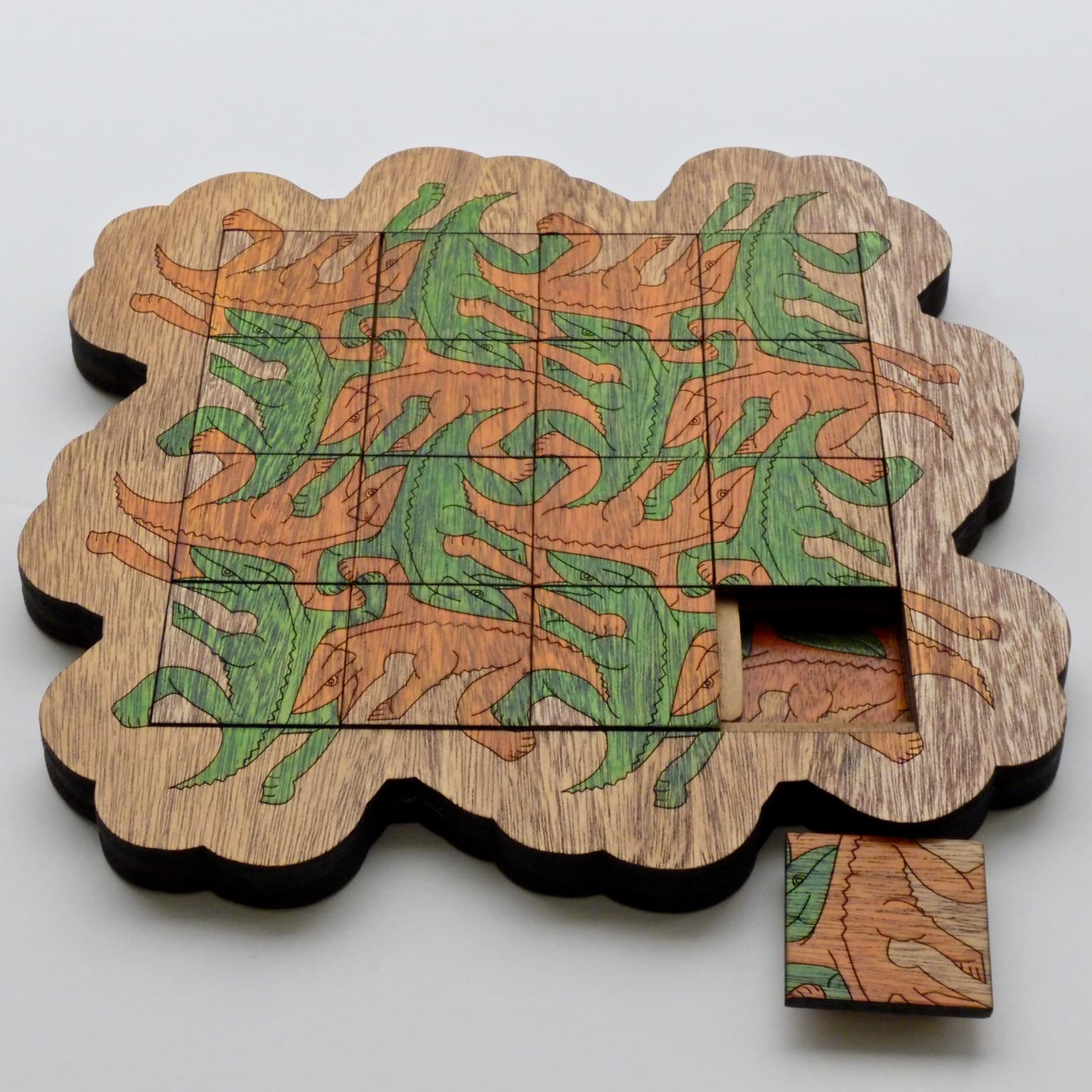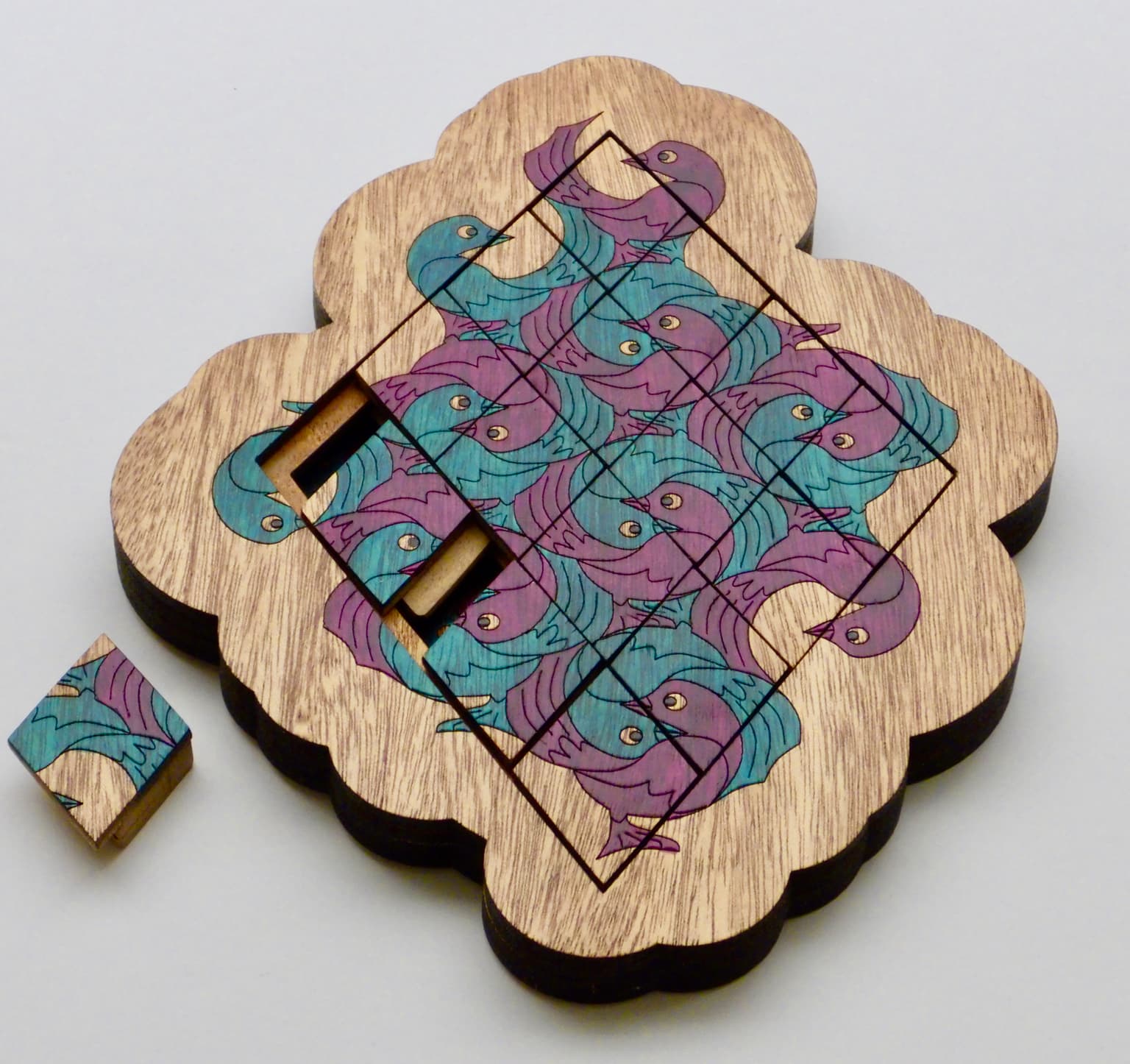Kevin Lee, using designs by Alain Nicolas and M.C. Escher
Artists
Kevin D. Lee
Instruction of Math/CSCI
Normandale Community College
Minneapolis, MN
Statement
For several years I have written software to create Escher-like tessellations. The goal of my new program, TesselManiac!, is to have users (especially young ones) create tessellations and explore this connection of math and art. TesselManiac! allows you to create thirty-six types of isohedral tessellations. It includes several animations, including one where the tile morphs from a base polygon tile to the final shape. I have been exploring techniques to laser cut and engrave tiles out of wood
Artworks

Escher 15 Lizards Sliding 15 Puzzle
27 x 27 x 2 cm
Mahogany, water colors, and lacquer.
2019
M. C. Escher's symmetry drawing 15 is used to create a sliding 15 puzzle (also known as the 16 puzzle). The lizard is Heesch tile type C4C4C4C4 which has a fundamental unit that is square. Normally the tiles are numbered 1 to 15 and the goal is to figure out a series of moves to slide the out of order tiles into numerical order. In this puzzle Escher's lizard motif has replaced the numbers and the goal is to slide the tiles to form a tessellation of lizards. If you ignore coloring, each interior tile is identical and contains the all the pieces of a complete lizard, Since the edge tiles are not complete and there are four different rotation orientations, each tile has a unique position in the puzzle.

Nicolas Lover Birds Sliding 15 Puzzle
29 x 23 x 2 cm
Mahogany, water colors, and lacquer
2019
The great tessellation artist, Alain Nicolas, created his Lover Birds tessellation using my computer program, TesselManiac. It is Heesch tile type CCGG, which when repeated creates a pattern with symmetry group pgg. The fundamental region of the pgg symmetry group normally is described with a rectangle but it also can be a rhombus. The rhombus unit is used for the tile in this sliding puzzle. In this case the position of all the tiles is not unique, two of the interior tiles are interchangeable. It still makes a good puzzle!